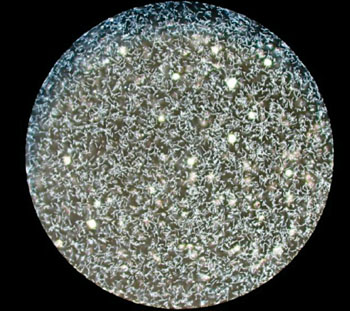Extended Multilocus Sequence Typing Developed for Leptospirosis
By LabMedica International staff writers
Posted on 05 Oct 2016
Leptospirosis is a zoonotic disease caused by pathogenic species of Leptospira that can be carried naturally by most mammalian species and transmission to humans most commonly occurs via direct animal contact or via water contaminated with animal urine.Posted on 05 Oct 2016
The gold standards for laboratory diagnosis of leptospirosis are culture or a four-fold rise in antibody titer between admission and convalescent samples by the microscopic agglutination test (MAT). Culture of Leptospira spp. is time consuming and diagnosis by MAT is retrospective by nature, hence both methods have disadvantages as diagnostic tools.

Image: A photomicrograph of Leptospirosis bacteria magnified ×200 in a dark field optical microscope (Photo courtesy Dr. Steve H Fisyh).
A team of scientists led by those at Public Health England (London, UK) modified an existing polymerase chain reaction (PCR) based on multilocus sequence typing (MLST) scheme by designing nested primers including anchors for facilitated subsequent sequencing. The assay was applied to various specimen types from patients diagnosed with leptospirosis between 2014 and 2015 in the United Kingdom (UK) and the Lao Peoples Democratic Republic (Lao PDR). Of 44 clinical samples (23 serum, six whole blood, three buffy coat, 12 urine) PCR positive for pathogenic Leptospira spp. at least one allele was amplified in 22 samples (50%) and used for phylogenetic inference.
DNA from bacterial isolates and Lao PDR samples was extracted using the QIAmp DNA Mini Kit (Qiagen). DNA from UK samples was extracted on the MagNA Pure Compact (Roche Diagnostics) using the DNA Bacteria Protocol. The PCR products were purified on a Biomek NXP automated liquid handling robot (Beckman Coulter Life Sciences) using Beckman Coulter Ampure XP paramagnetic beads. Sanger sequencing was carried out on the 3730XL Genetic Analyzer (Applied Biosystems).
The team obtained full allelic profiles from ten specimens, representing all sample types (23%). No nonspecific amplicons were observed in any of the samples. Of twelve PCR positive urine specimens three gave full allelic profiles (25%) and two a partial profile. Phylogenetic analysis allowed for species assignment. The predominant species detected was L. interrogans (10/14 and 7/8 from UK and Lao PDR, respectively). All other species were detected in samples from only one country (Lao PDR: L. borgpetersenii [1/8]; UK: L. kirschneri [1/14], L. santarosai [1/14], L. weilii [2/14]).
The authors concluded that typing information of pathogenic Leptospira spp. was obtained directly from a variety of clinical samples using a modified MLST assay. This assay negates the need for time-consuming culture of Leptospira prior to typing and will be of use both in surveillance, as single alleles enable species determination, and outbreaks for the rapid identification of clusters. The study was published on September 21, 2016, in the journal Public Library of Science Neglected Tropical Diseases.
Related Links:
Public Health England







 assay.jpg)






